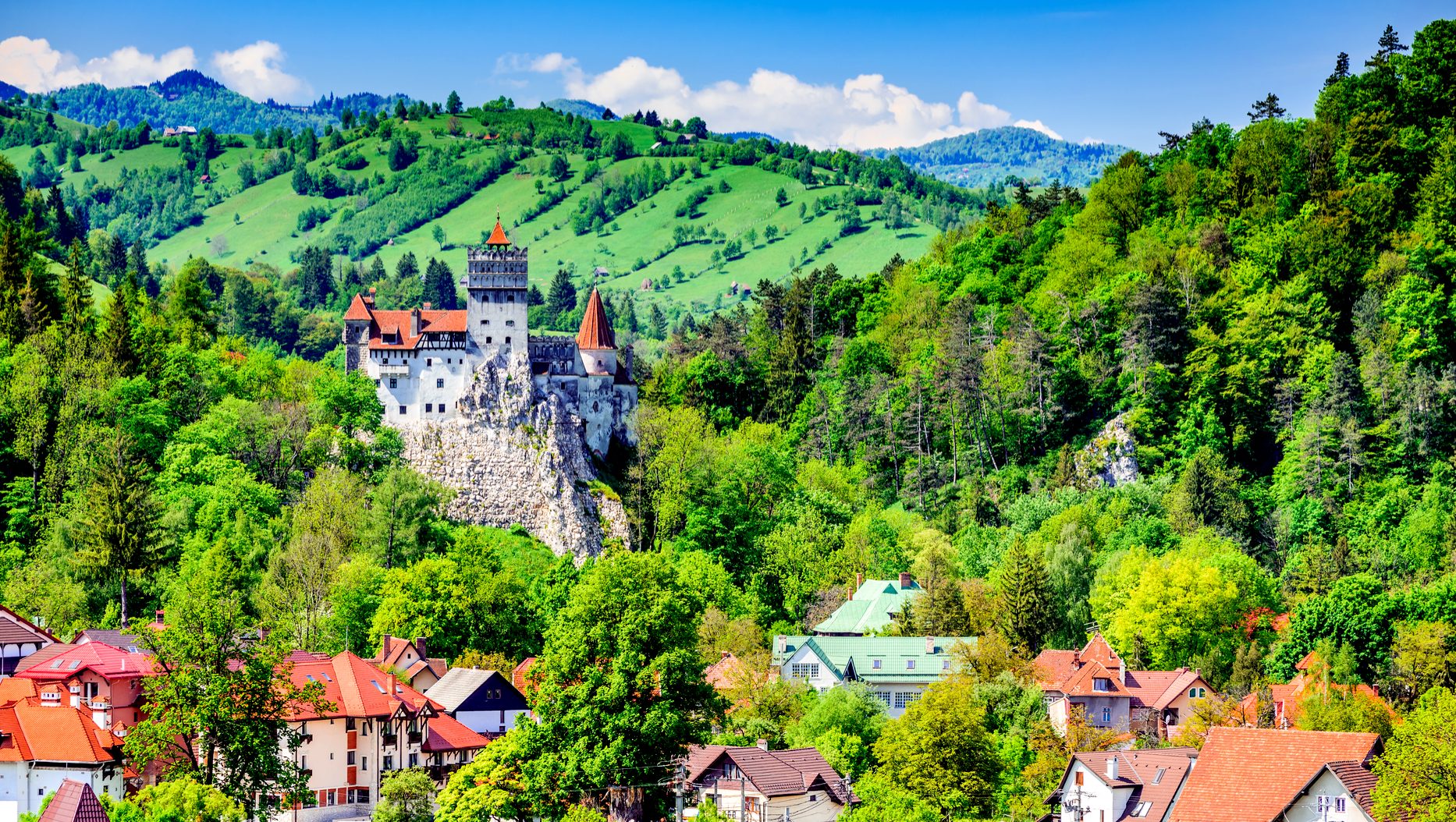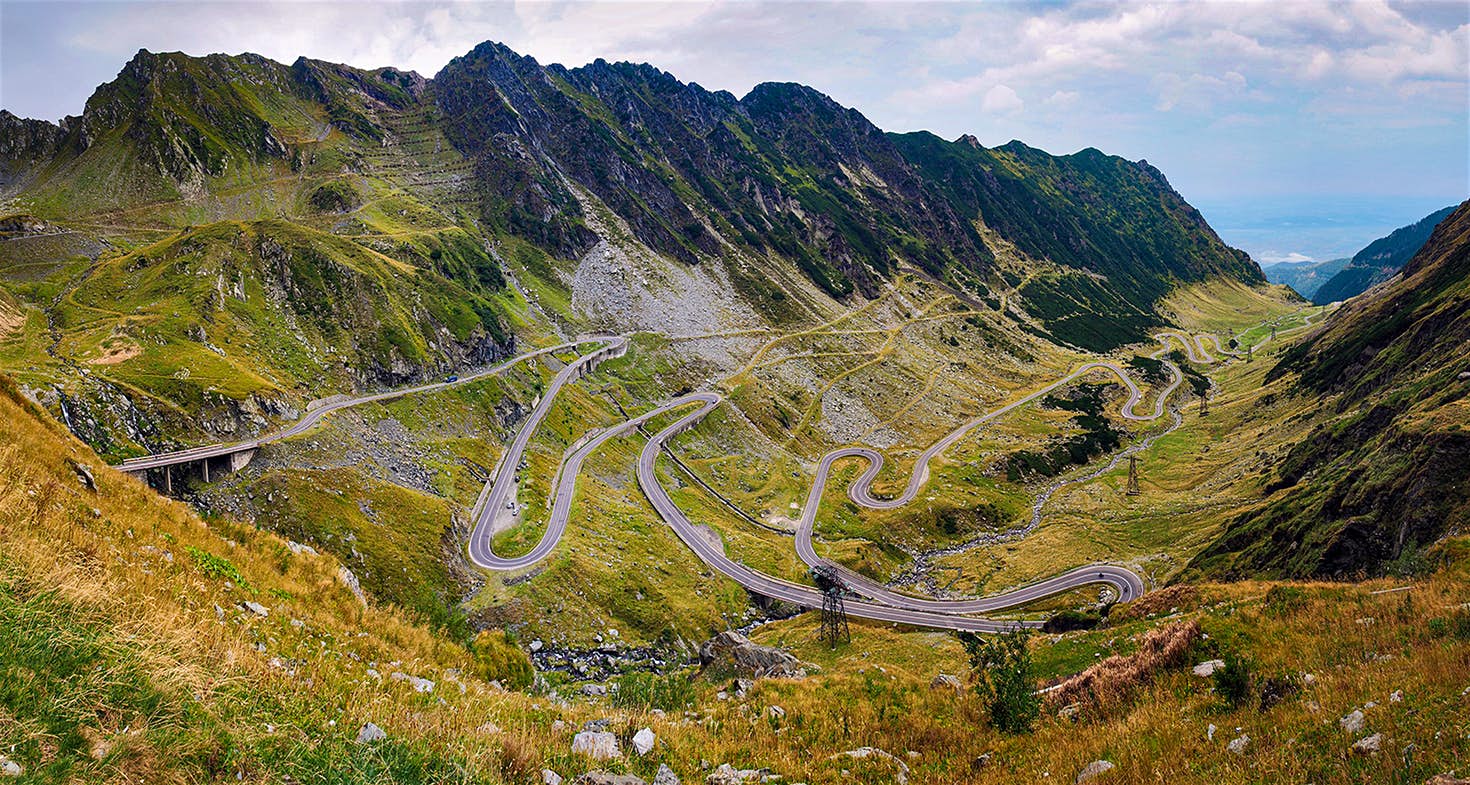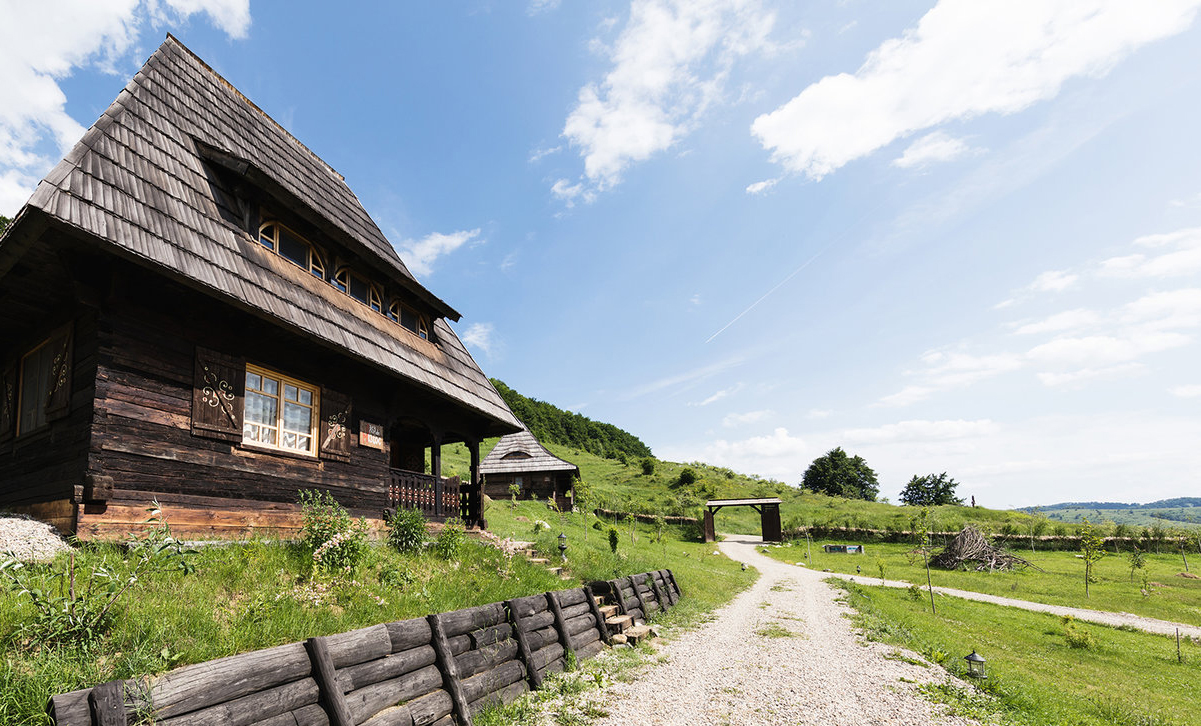Transylvania Highlights
Transylvania is home to some of Europe’s best-preserved medieval towns, most notably Brasov, featuring Old Saxon architecture and citadel ruins; Sibiu with its cobblestone streets and pastel-colored houses, and Sighisoara, adorned with a hilltop citadel, secret passageways and a 14th century clock tower. Tiny shops offer antiques and fine hand-made products by local artisans and artists.
Visitors to Transylvania will also encounter stunning castles such Bran, near Brasov, – a Gothic fairy-tale structure, often associated with 15th century Walachian Prince Vlad Tepes, the inspiration for Bram Stoker’s Dracula. While the connection with Vlad is tenuous, the deep bond of local villagers with the legend is not.
In close proximity to Brasov and Bran are the fortified churches at Harman, with its massive 13th Saxon towers, and Prejmer, the largest fortified church in Southeastern Europe. The 15th-century Corvinilor Castle, the most beautiful in Transylvania, located nearby Hunedoara, has a sumptuous Knights Hall – that can be used for functions or parties, as well as towers and buttresses reminiscent of the medieval times.
Transylvania’s multi-ethnic heritage (including German and Hungarian ) is delightfully apparent in the folk costumes, architecture, cuisine, music and festivals.
Colorful centuries-old traditions are alive and well in the small villages of Transylvania. People here still make a living at such time-honored occupations as shepherds, weavers, blacksmiths and carpenters.
The Apuseni Mountain range, in the western Carpathians, is a landscape of exquisite beauty and mystery. Here, you’ll find ancient legends of mountain spirits and rare species of wildlife, along with 4,000 caves, many of which can be explored. Scarisoara Glacier, a national monument, shelters the second largest underground glacier on the continent.
Places to explore in Transylvania
Some of Europe’s best-preserved medieval towns: Brasov, Sibiu, Sighisoara
Bran Castle (also known as Dracula’s Castle), built in 1377
Rasnov Fortress – built in the 1300s by the Teutonic Knights to protect Transylvania against the Tartars and the Turks
The Saxon fortified churches at Biertan, Calnic, Harman, Darjiu, Prejmer, Saschiz, Valea Viilor, and Viscri – all designated by UNESCO as World Heritage sites
Transylvania’s finest art museum – the Bruckenthal Palace in Sibiu
Marginimea Sibiului, an area northwest of Sibiu home to more than 18 traditional villages
The Museum of Glass-Painted Icons in Sibiel, the largest of its kind in Europe
The city of Hunedoara with its 14th-century Gothic Corvinilor Castle
The Dacian Fortresses at Sarmisegetuza (UNESCO World Heritage List)
The Moti Land (Tara Motilor) on the Ariesi Valley – moţi is the name given to the inhabitants of this region. They live in scattered villages at altitudes up to about 4,265 feet and have preserved their century-old traditions and lifestyle.
The Apuseni Mountains with Scarisoara and Focul Viu glaciers, Chiscau Bears’ Cave and Vartop Cave as well as other 400 caves.
Food & Wines of Transylvania
Traditional food
Transylvania’s cuisine displays a variety of flavors with dishes spiced with thyme, red pepper or tarragon. Meats, such as pork, mutton, veal, are among the most popular ingredient in Transylvania’s cuisine. The soups, to which sour cream and egg yolk are ofted added, also include flour dumplings or homemade pasta.
Romania is one the world’s leading producers of cabbage (varza). Make sure you don’t leave the region without trying the delicious “Varza a la Cluj” – the Romanian version of lasagna – prepared from several layers of finely shredded cabbage (fresh or sour) and minced pork or veal mixed with rice and bacon and baked in the oven.
Vineyards
“Transylvanians” are not only artisans in producing fragrant, pleasant and light wines, but also sophisticated double-distilled liquors: palinca, horinca and rachie (varieties of brandy). These are made of fruit, particularly plums, apples, and pears, and aged in mulberry tree or oak barrels.
The vineyards in Tarnave area: Blaj, Jidvei, Medias, Tarnaveni, Zagar and Valea Nirajului are known for their excellent white wines. With its cool climate and sloped terrain that stretch from the Tarnava Mare to the Tarnava Mica rivers, Tarnave is ideal for fruity white grapes with mild acidity. The area has a long tradition of producing excellent dry, and medium-dry flavored wines such as Feteasca Alba, Feteasca Regala, Sauvignon Blanc, Muscat Ottonel, Chardonnay, Pinot Gris and Traminer.
Even if traditional tools have been replaced by modern wine-presses and state of the art technology, grape picking, the control of fermentation, clarity, stability, the storage and maturation of wine are all carried out according to a rules handed down from generation to generation. Many small farms are still producing their own wines.






